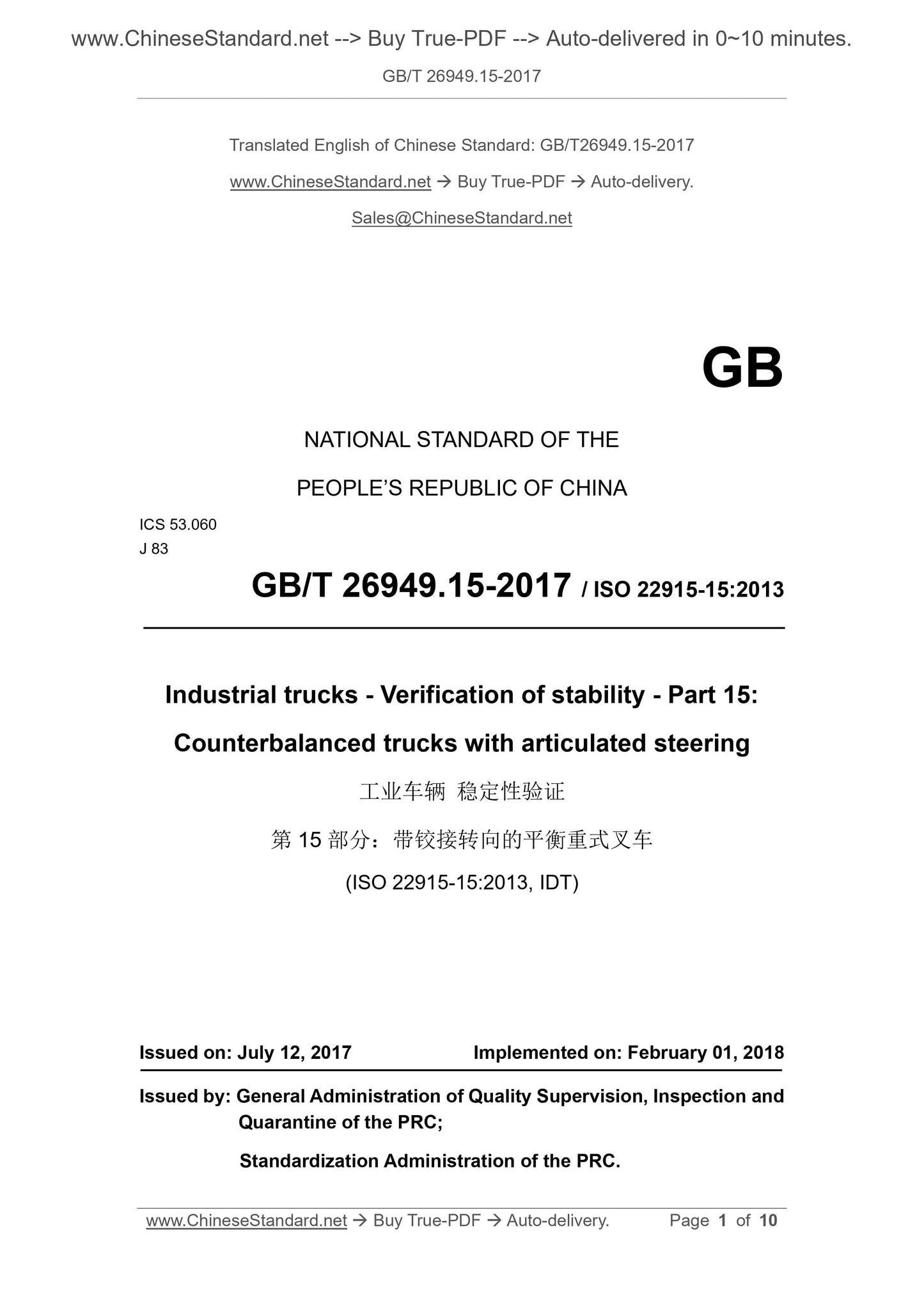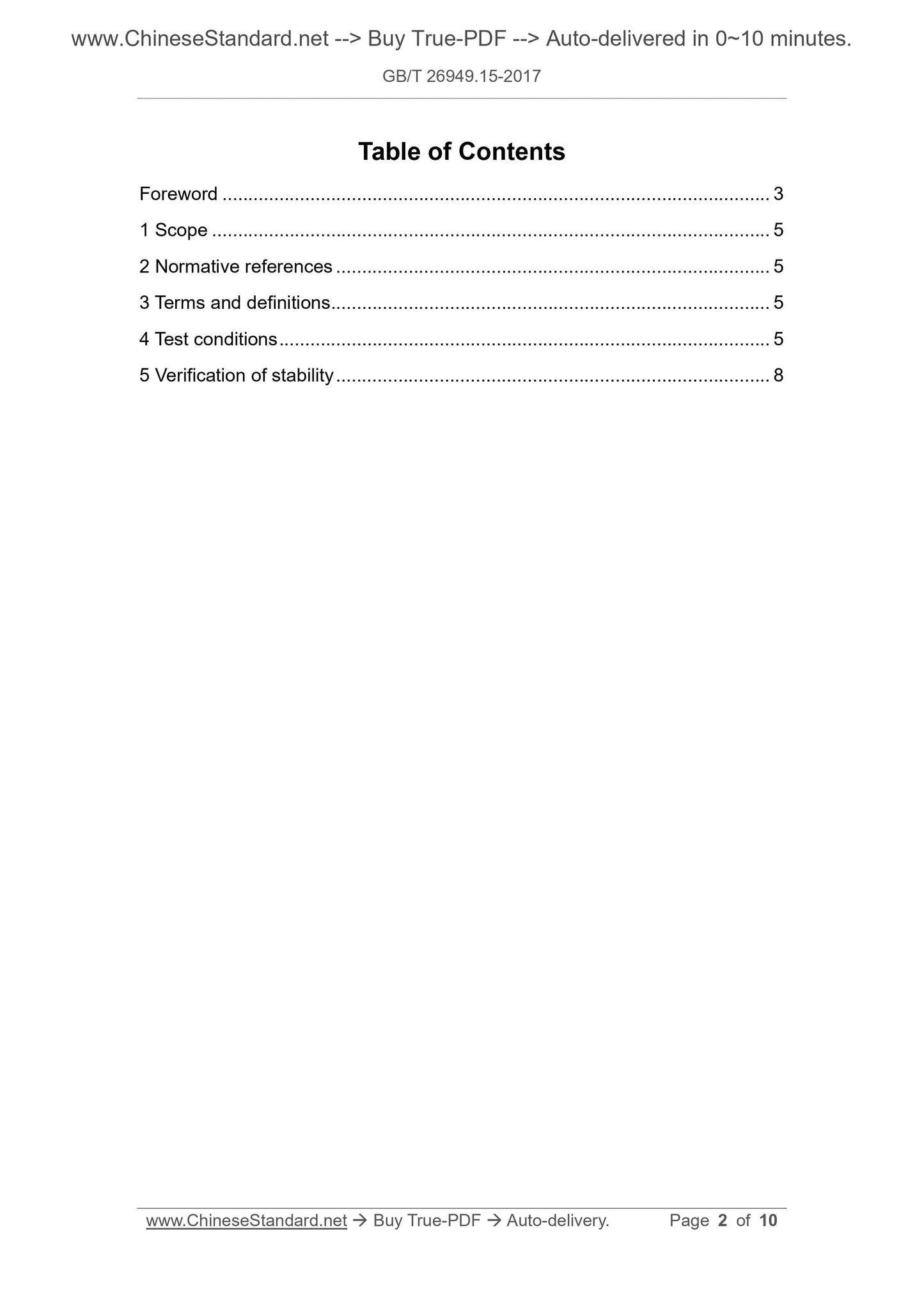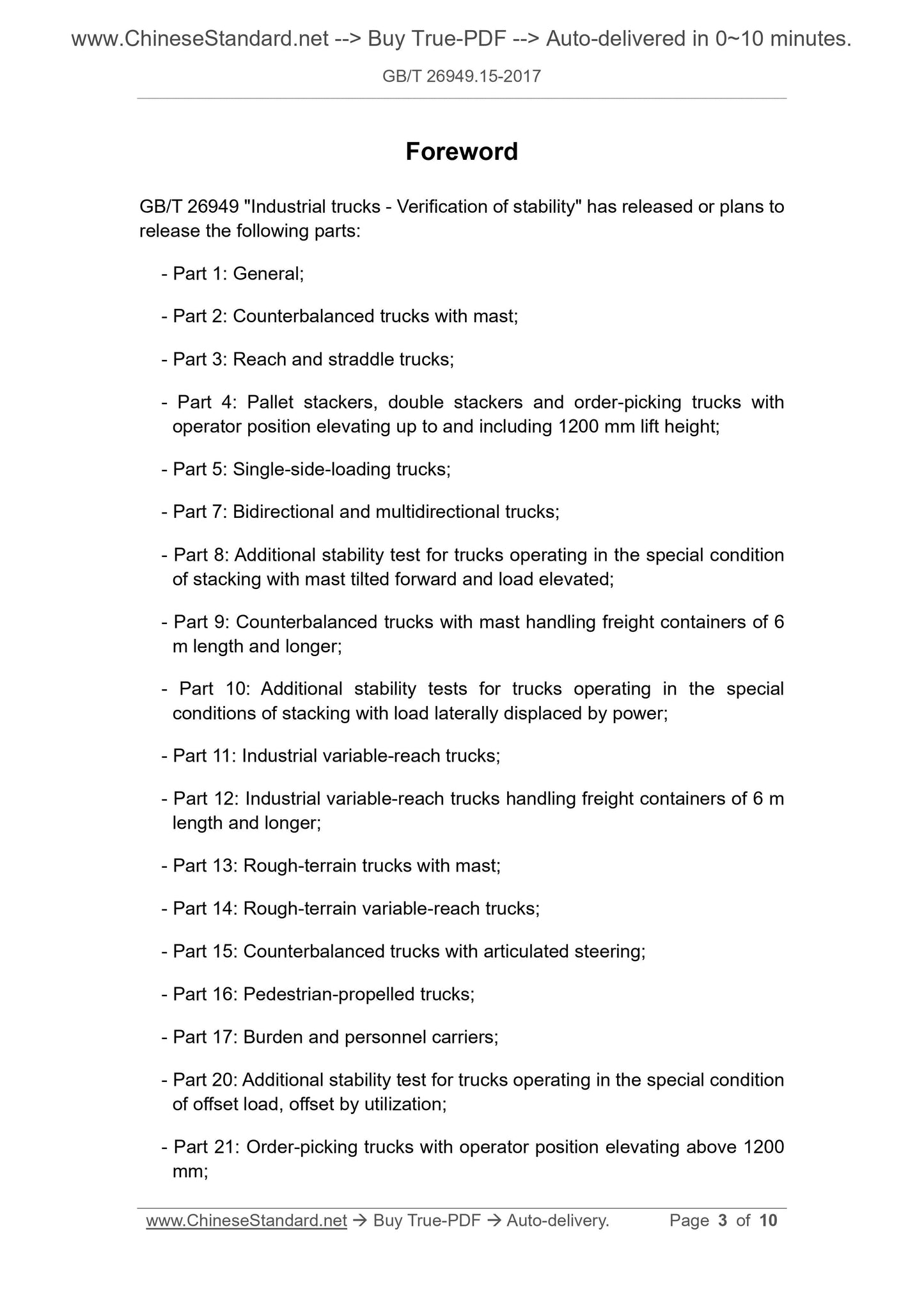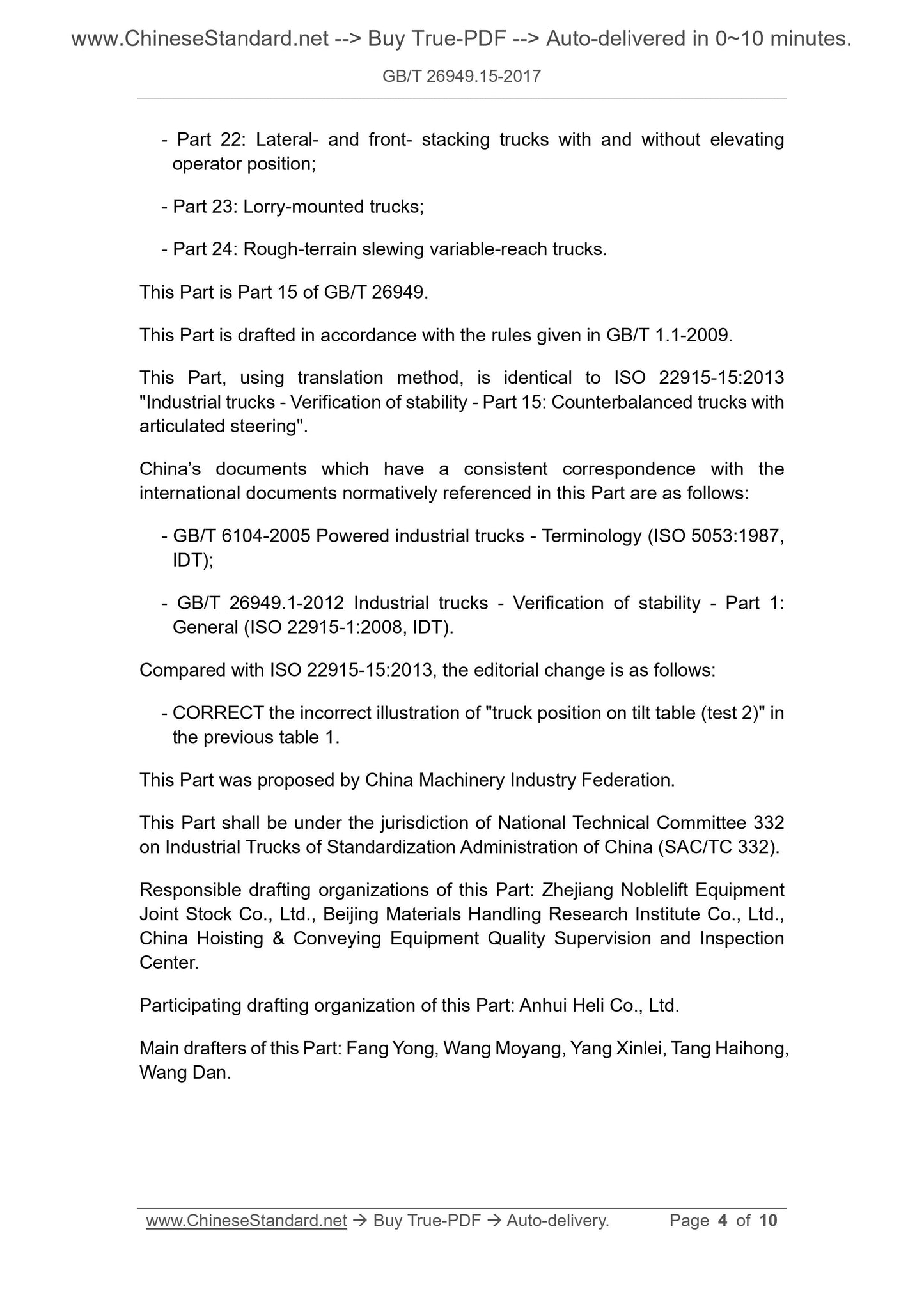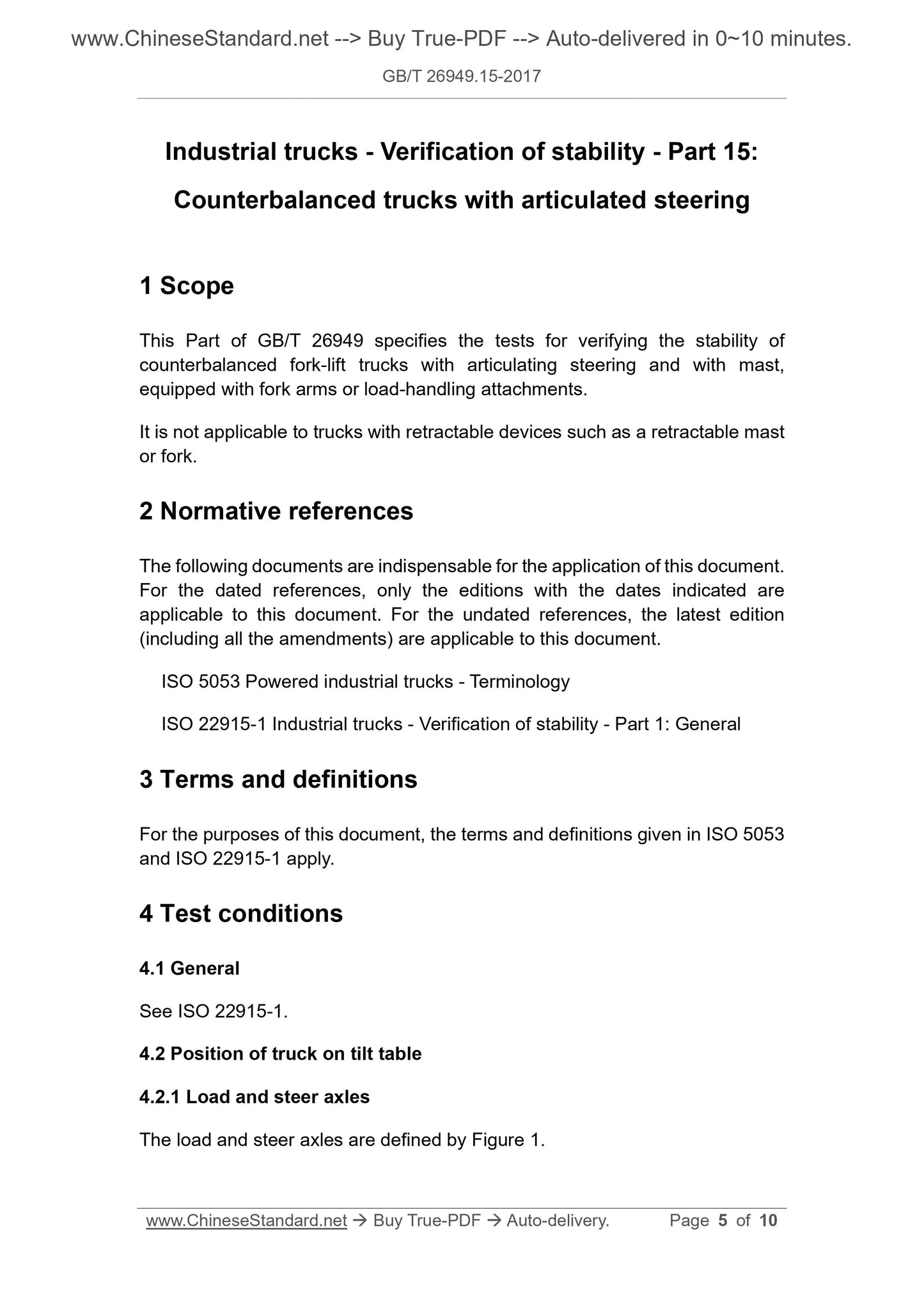1
/
of
5
www.ChineseStandard.us -- Field Test Asia Pte. Ltd.
GB/T 26949.15-2017 English PDF (GB/T26949.15-2017)
GB/T 26949.15-2017 English PDF (GB/T26949.15-2017)
Regular price
$115.00
Regular price
Sale price
$115.00
Unit price
/
per
Shipping calculated at checkout.
Couldn't load pickup availability
GB/T 26949.15-2017: Industrial trucks -- Verification of stability -- Part 15: Counterbalanced trucks with articulated steering
Delivery: 9 seconds. Download (and Email) true-PDF + Invoice.Get Quotation: Click GB/T 26949.15-2017 (Self-service in 1-minute)
Newer / historical versions: GB/T 26949.15-2017
Preview True-PDF
Scope
This part of GB/T 26949 provides for the verification of counterweight forks with articulated steering with gantry, forks or load handling attachmentsTest method for vehicle stability.
This section does not apply to vehicles with a forward-moving (retractable gantry or fork).
Basic Data
| Standard ID | GB/T 26949.15-2017 (GB/T26949.15-2017) |
| Description (Translated English) | Industrial trucks -- Verification of stability -- Part 15: Counterbalanced trucks with articulated steering |
| Sector / Industry | National Standard (Recommended) |
| Classification of Chinese Standard | J83 |
| Classification of International Standard | 53.060 |
| Word Count Estimation | 8,885 |
| Date of Issue | 2017-07-12 |
| Date of Implementation | 2018-02-01 |
| Quoted Standard | ISO 5053; ISO 22915-1 |
| Adopted Standard | ISO 22915-15-2013, IDT |
| Issuing agency(ies) | General Administration of Quality Supervision, Inspection and Quarantine of the People's Republic of China, Standardization Administration of the People's Republic of China |
| Summary | This standard specifies the test method for verifying the stability of counterbalanced forklift with hinged steering, with fork or load handling. This standard does not apply to vehicles with forward (retractable mast or fork). |
Share
